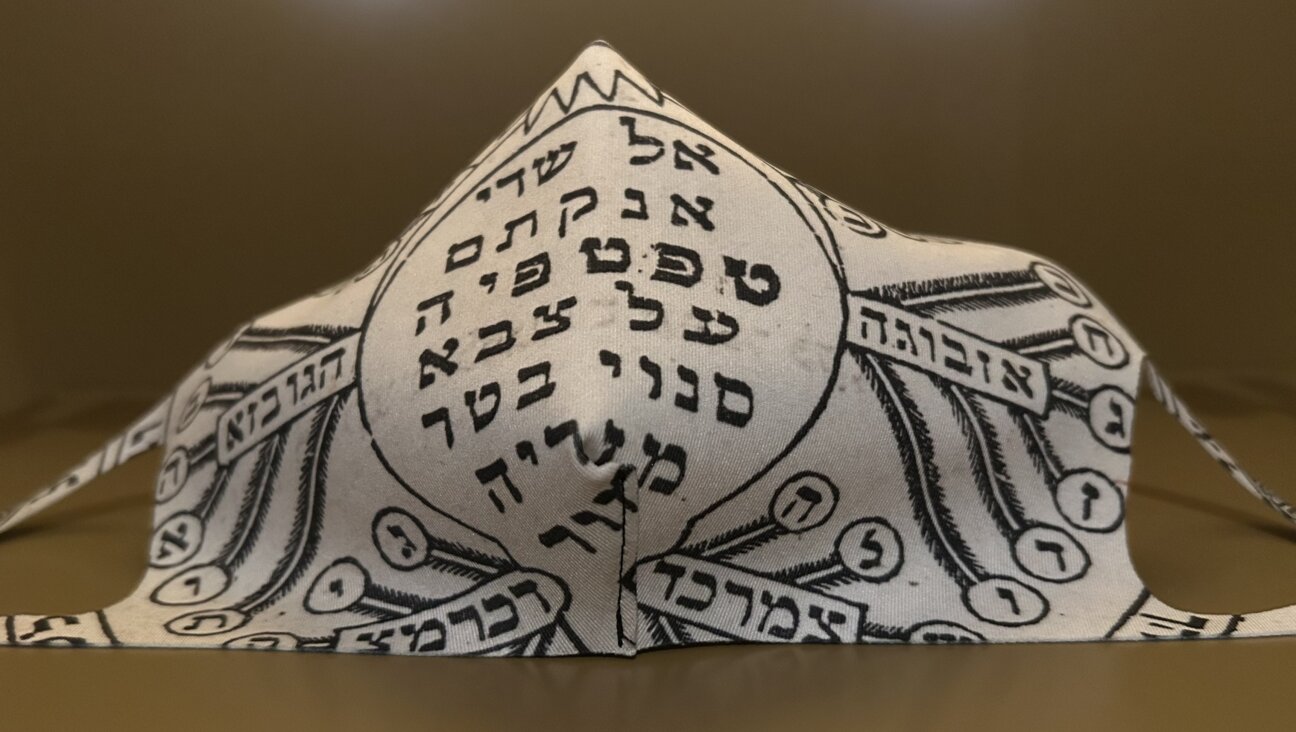So, what’s up with all that kissing in synagogue? (No, not the people — the Torah!)
Born into a Christian cult, a Jewish writer discovers the meaning behind a practice she once found puzzling

A man kisses a Torah during the official opening ceremony of a new synagogue in Speyer, Germany. Photo by Ralph Orlowski/Getty Images)
The first time I attended synagogue was as an adult. I left confused and bemused. It was an Orthodox synagogue so men and women were seated separately. Rapid-fire, rote, muttered Hebrew prayers were punctuated now and then by a loud “Ah-men!” People shuffled in and out of the sanctuary at will.
Throughout the service, for no readily explicable reason, you stood, then sat again, stood, bowed forward and back, and swayed in a motion called shuckeling, which made me think of shucking corn in the cornfields back home in Indiana. Unlike in the doomsday Christian cult I grew up in, there was nary a mention of salvation, Satan or the End of Times. And congregants did not listen quietly.
What felt utterly foreign to me was the rampant kissing. Jews kiss the prayer book and Bible before they put it away. They kiss the curtain of the ark before opening it and taking out the Torah. Then, after reading from the Torah, some man totes it around the synagogue while one after another, the men lift the tzitzit (fringes) of their prayer shawls, press them against the Torah mantle, and then kiss the shawl. The Christian God I grew up with was a shusher, not a kisser.
I understood that kissing the Torah is an expression of devotion to God’s words, though personally, it seemed to border on a fetishization of the physical Torah. It was also a bit too much of a public display of affection for me. I recoil from handholding, unless it’s a child under the age of 6 who needs help crossing the street.
But beyond the kissing itself, I found it curious that the men (most, not all) specifically used their prayer shawl instead of, say, their prayer books, which women held out to touch the traveling Torah and then kissed. What was that all about? Over the years, I have asked various people, including Orthodox rabbis, why the prayer shawl and tzitzit are used. The answer: Custom. Tradition. Yes, but where did the custom come from? No one seemed to know.
A museum in Israel supplies the answer
Recently, I was in the Bible Lands Museum in Jerusalem, a museum that is unique in placing the Biblical narrative within the context not only of ancient Israel, but also of the lands surrounding it, and I found the answer to the question that had plagued me these many years. I was ecstatic. (Not that I was showing it.)
One of the exhibits, “The Seal in the Bible,” using Akkadian legal texts as its basis, explains that in ancient times, holding the hem of someone’s garment symbolized one’s attachment to a king or god, while the fringe of the garment served as an individual’s personal identification.
According to the museum exhibit text, “It has been suggested that the practice followed in the synagogue to this day of pressing the edge of the tallit to the Torah may be a survival of the ancient custom of using the fringe of a garment as a seal and as a symbolic act — the seal as well as the fringe was a symbolic representation of the individual and served to commit him as well as identify him.”
I sort of got it. But not quite. So I contacted Dr. Yigal Bloch, a curator at the Bible Lands Museum, to clarify.
“There is evidence,” Bloch said, “that some time in the second millennium B.C.E., people pressed the fringes of their garment against a raw clay tablet recording some sort of transaction as a mark of authorizing the transaction — in such a case, an imprint of the fringe would be seen on the tablet after it dried.”
A physical affirmation, perhaps
Ah ha! Not a fetish. The practice dates back thousands of years to when the Israelites were influenced by their Akkadian (modern day Iraq, roughly) and Babylonian neighbors. Pressing the tzitzit to the Torah may have originated as a physical affirmation of one’s commitment to observe the Torah.
There are numerous other parallels between ancient Near Eastern stories and practices, and those recorded in the Bible. For example, the Bible has Moses, and the Akkadians have Sargon, whose mother, it is said, placed him in a basket of rushes sealed with tar, and sent him down the river, where he was saved by the king’s gardener Akki.
But whatever the similarities, there are striking differences. One of them, of course, is that while I am sitting and standing and shuckeling in synagogue observing Rosh Hashanah and Yom Kippur, no Akkadian or Babylonian will touch his tallit to the Torah and kiss it. Long ago, the Akkadians and Babylonians were absorbed into other nationalities and left the world stage as an identifiable people.
Identity hangs by a thread, something I am surely aware of. As a Jew, I no longer concern myself with getting my own butt saved and making it into the next world, which was something that preoccupied me throughout my Christian childhood. Instead, my understanding of how to be a Jew — and there are as many understandings as there are Jews — is to commit in words and in deeds to do my small part to save this world, as God’s partner in creation.














